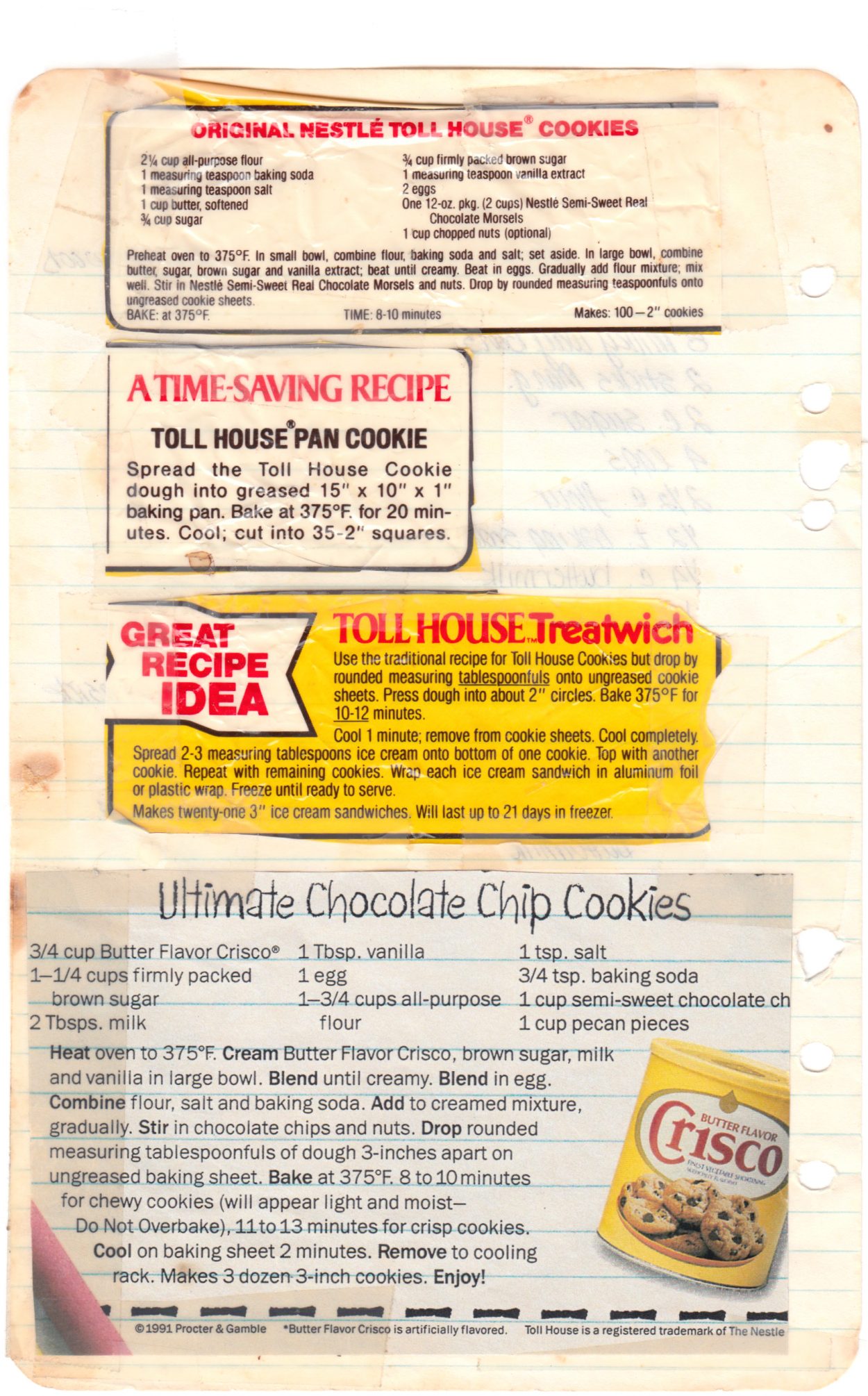Published
feministopensource.group
We’ve got a very simple page up for the Feminist Open Source Group. Excited to see where this heads.
Published
We’ve got a very simple page up for the Feminist Open Source Group. Excited to see where this heads.
Published

Ceramic Cat
David Hockney 1955On loan from Jean and Paul Hockney.
This cat was given to David Hockney’s brother and sister-in-law as a wedding present in September 1955. It was one of approximately four cats made by the artist whilst a student at Bradford College of Art. After the model was produced the mould broke, making this sculpture unique as it was the only one with indentations. Subsequent versions were produced with a smooth finish and in different colours.
This life-size ceramic cat with stubby little legs is in one of the display cases in the ground floor of Salts Mill alongside many other pieces by David Hockney.
Published

I grew up with Toll House chocolate chip cookies. Until today, I didn’t know that the Toll House recipe is supposedly the original chocolate chip cookie recipe.
Published
To read: The Ego and Its Own by Max Stirner. Via a black-crowned night heron in a midnight pond:
stirner’s whole schtick was being against ideology in general. […] behaving a certain way in the name of an Idea is therefore completely illogical, because, it’s not real! what’s real is your own happiness and comfort in the world.
Published
Remember those free trial CD-ROMs you’d get in the mail or with a magazine? It started with AOL Online and then tons of other software providers caught on. Instead of tossing them away, my mom collected them. Around Christmas time, she’d drill holes in the top and hang them outside on the bare tree near the mailbox. I’m sure I gave her a hard time about it as a teen, but they made me smile when I got back home from school each day.
At the end of the holidays, she’d get rid of the discs that were too banged up and would keep the ornaments that still had their rainbow surface for the next season. The tree got fuller every year until the mid-2000s when they stopped arriving. Eventually the lacquer and aluminum flaked away from the remaining discs, and then the CD-ROM tree was no more.
The Internet Archive has an AOL CD-ROM collection online for anyone that wants to browse this slice of tech history.
Published
We need a @JustOnReddit or @JustSomeoneOnFacebook equivalent of the excellent @JustSaysInMice. So tired of the divisive words of a few making their way in to fear mongering news headlines.
Published
In a recent Guardian opinion piece, George Monbiot calls for “political rewilding” to fight against demagoguery.
At the moment, the political model for almost all parties is to drive change from the top down. […] I believe the best antidote to demagoguery is the opposite process: radical trust. To the greatest extent possible, parties and governments should trust communities to identify their own needs and make their own decisions.
Makes a ton of sense at first glance. But isn’t “political rewilding” just the best of libertarianism repackaged, the freedom of choice and voluntary association? I can understand why he didn’t use that word. The worst of libertarianism — civil liberties at all costs, at the expense of others, the earth, and more — has usurped the rest of it ideologically. “Libertarian” is to the left as “socialist” is to the right.
Related, but separate: in his article, Monbiot draws attention to Finland’s impressive (and seemingly successful) efforts to teach their populace how to spot fake news. In the CNN article he links to, the former secretary-general of the European Schools Kari Kivinen cautions that “it is a balancing act trying to make sure scepticism doesn’t give way to cynicism”.
That line hit home. Reading the news, parsing Twitter, fielding well-intended but misguided email forwards from loved ones. I’ve been living in the barrel for a while now, and it’s exhausting.
On the upside, I’ve joined Mastodon on the vis.social server. My handle is @piper@vis.social, and I’ve downloaded Toot! for iPhone since I like their stance against servers that spread hatred. I’m excited to give a smaller community a whirl, hopefully it will expose me to a more human and humane part of the social web.
Published
I needed to get a large, sensitive PDF from my mom who is roughly 5,000 miles away. I didn’t really want it sitting in either of our mailboxes or on a mail server somewhere, and it was probably too big for email. I decided to work with her to set up Beaker so that she could do a peer-to-peer transfer with me over Dat.
Published
Everything feels so high-stakes. Doesn’t help that the general election is a little over 24 hours away. 😐
Escapism helps lower the bar a bit, knocks you off the daily life tightrope, but sometimes even books and movies can feel like too much. If I’m already wound tight, then I’m not sure that filling 100% of my free time with James Bridle or Adam Curtis is going to do wonders for my mental health. I know, I *promise* I’ll get round to them eventually!
These are some options for low-stakes, low-cost escapism that have worked, or could work, for me:
I’ll try to add to this over time.
Important note: Consider turning off all pop-up notifications on your devices and removing the count badge from your email if you have a Mac or an iPhone. You don’t need any of that gunk, I promise.
Published
🔮🦷👁🌙
Last night was Musarc’s winter concert The Orrery on the first day of LCMF 2019. Our performance included a new commission from Lina Lapelytė Time to Become One, the UK premiere of Jennifer Walshe’s The White Noisery, György Ligeti’s Poème symphonique, Un soir de neige by Francis Poulenc, and Fritz Hauser’s Schraffur (Hatchings).

Everything revolved around a floating, glowing orb.
The evening was conceived in collaboration between Sam Belinfante, the contributing composers / artists, members of Musarc, and our inimitable directors Cathy Heller Jones and Joseph Kohlmaier. It all came together with a ton of help from friends and metronome-sitters, and exceedingly delicious vegan food was offered by Return to Shashamane.
It was intense and meditative. I’ve spoken to a few friends in the audience who had nice things to say, but also I’m curious to know what others in the audience thought. I’ve seen at least one good blurb, which is lovely.
Big things for the choir next year I expect. In the shorter term, I’m looking forward to the rest of LCMF’s Witchy Methodologies. Particularly On Rites and Reenchantment and On Gossip & Eavesdropping.
Image via LCMF